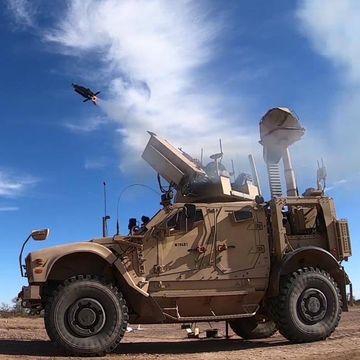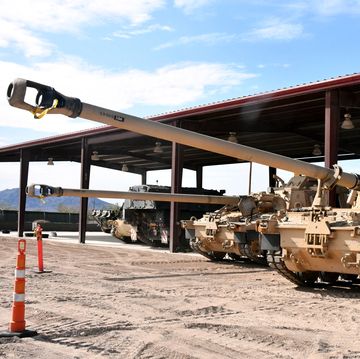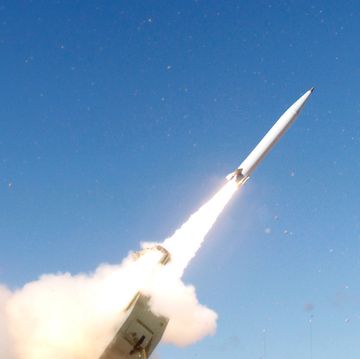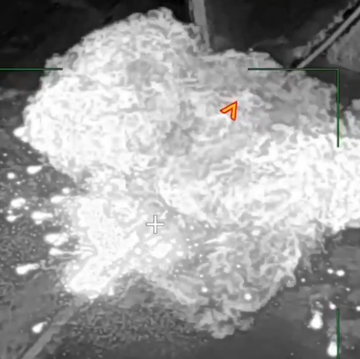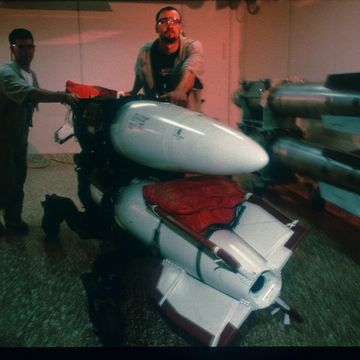Long before the protests in Ferguson, Mo., and the controversial militaristic response by the St. Louis County Police, police departments across the country were taking advantage of government programs to equip with surplus military gear, from laser gun sights to drones.
According to a June 2014 article in The New York Times, during the Obama administration's tenure, "police departments throughout the U.S. received tens of thousands of machine guns; nearly 200,000 ammunition magazines; thousands of pieces of camouflage and night-vision equipment; and hundreds of silencers, armored cars and aircraft." The supply of surplus military equipment to law enforcement began through DoD's 1033 program, approved by Congress in 1997. But the flow of equipment has increased considerably since the military draw-downs in Iraq and Afghanistan.
What is all this stuff that police officers are suddenly using against American citizens? Here are five types of the most significant gear, and what the military does with it on the battlefield.
LRAD/MRAD – Long/Medium Range Acoustic Device
The Long Range Acoustic Device (LRAD) was developed for the U.S. Navy in the wake of the October 2000 attack on the USS Cole. Originally intended as an acoustic hailing device that the Navy and commercial vessels could use to warn off approaching small craft, it found application on land as a non-lethal deterrent or weapon to disburse crowds. A scaled-down version, the MRAD (medium range acoustic device) has seen use by American ground forces in Iraq.
Law enforcement agencies have used the LRAD/MRAD to shout instructions to crowds during demonstrations. Depending on the model, voice communication can be heard out to 500 meters or more.
In short bursts at 300 meters (980 ft.) LRAD/MRAD devices can reportedly give targeted people a headache. Within 100 meters the devices can reportedly damage hearing, though representatives of LRAD Corp, which developed the weapon, say permanent auditory damage is unlikely beyond 15 meters.
M-ATV MRAP
Thousands of Mine-Resistant Ambush-Protected (MRAP) vehicles were sent to Iraq and Afghanistan over the last 10 years. Many have become surplus, including the lighter-weight (25,000 lb) M-ATV (MRAP All Terrain Vehicle).
Developed specifically to address the IED threat in Afghanistan, the M-ATV replaced the ubiquitous Army/Marine HMMWV (Humvee) in the theater. Powered by a 370 hp turbodiesel, the M-ATV has specially designed layered armor and a V-shaped hull to deflect blasts and prevent IEDs from entering the cabin.
Law enforcement versions of the M-ATV contain combat features including a central tire inflation system, TAK-4 independent suspension, and an engine-coolant-hydraulic system that can take a direct hit from a 7.62mm round and still drive a full kilometer. However, the police don't get weapons systems like an M240 7.62mm machine gun, a Mk-19 grenade machine gun, or TOW anti-tank missile launcher.
Despite its heft, the M-ATV is surprisingly maneuverable. It can get to the scene of the crime across almost any terrain or travel 60 mph on the road.
M16A2/High-Capacity Magazine
The M16 rifle is an iconic firearm known to anyone with even a passing interest in the U.S. military. In use by all American service branches and numerous government agencies, the 5.56mm select-fire, semi-automatic weapon replaced the M14 and AR-15 to become the Army's standard weapon in 1969. Approximately eight million have been produced.
Over the last decade, the services have been replacing the M16A2 with the improved (removable stock) A4 version. Most of the surplus rifles released to law enforcement agencies are A2s, though those A2s come with myriad potential modifications, from silencers to full-automatic capability.
Perhaps the most significant M16 modification made available by the government is the-high capacity magazine or clip. Standard M16 magazines have a 20 to 30-round capacity, but law enforcement agencies have received 60 to 100-round high capacity magazines.
Individual Integrated Fighting System Vest
Numerous police departments have received the Individual Integrated Fighting System (IIFS) vest through the 1033 program. Introduced in 1988 as a replacement for an older vest design, it is also commonly known as a Tactical Load Bearing Vest.
The IIFS carries a variety of equipment used by an infantry rifleman. The vest combines compartments for carrying ammunition with protective Kevlar panels in a design that distributes the load across a soldier's body via an integrated suspender and belt concept. The IIFS vest can be worn with the Personnel Armor System for Ground Troops (PASGT) Kevlar body armor vest.
IIFS remains in service with U.S. forces, though it is slated for replacement by the Modular Lightweight Load-Carrying Equipment or MOLLE system. A wide variety of distributors, including several Chinese companies, provide surplus and foreign manufactured IIFS vests to the commercial market.
Night Vision Goggles
Night Vision Goggles (NVGs) have been around for generations, giving U.S. forces a compelling advantage in land, sea, and air situations. They improve vision at night through a combination of ambient light amplification and infrared sensing. The NVGs supplied to police departments are typically third-generation units like the AN/PVS-7A or AN/PVS-7B.
Introduced in 1985 and still in military use, the AN/PVS-7 NVGs incorporate active night vision using a built-in infrared LED for low-light situations. The googles are waterproof and charged with nitrogen to prevent internal condensation while the wearer moves between extreme temperatures. Manufactured by Virginia based ITT/ITT Exelis and New Hampshire-based L-3 Insight Warrior Systems, hundreds of thousands of NVGs have been produced and have seen increasing use by drug cartels and other criminal organizations.









